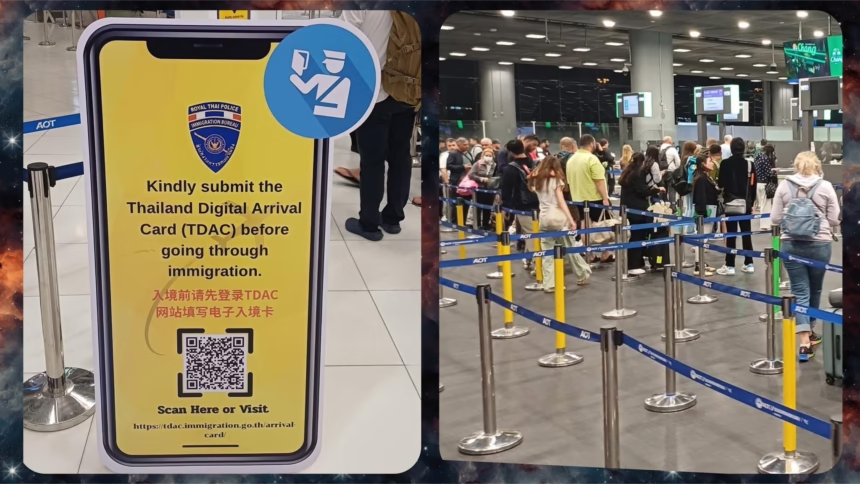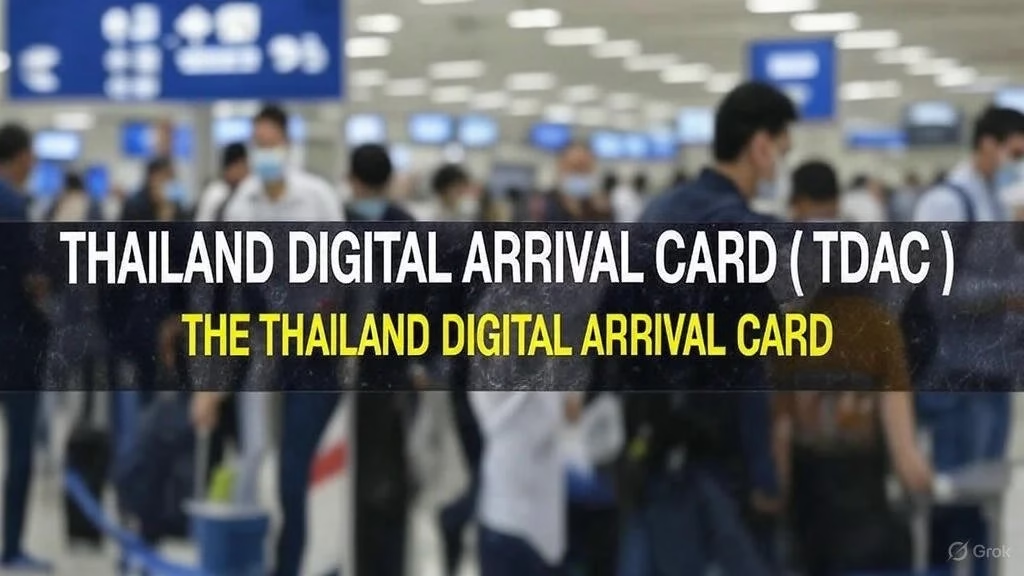BANGKOK – With Phuket’s waters still turquoise and Bangkok’s neon buzzing into the night, Thailand keeps drawing travellers with temples, street food, and white-sand beaches. For those flying in this high season, a quiet change has reshaped arrivals since spring.
The Thailand Digital Arrival Card, or TDAC, has taken the place of the old paper TM6 form. Since launching on 1 May 2025, this compulsory online form has aimed to speed up entry and tidy up queues. Five months on, the system is widely praised, even if the early weeks brought a few bumps.
No more hunting for a pen mid-flight or juggling flimsy cards in cramped seats. Visitors now complete their details on a phone or laptop up to 72 hours before landing. Many report that it takes only a few minutes, then immigration checks a QR code, and they are on their way. The experience, for lots of travellers, now feels quicker and far less stressful.
Run by Thailand’s Immigration Bureau, the TDAC asks for basics such as passport number, flight details, accommodation, and simple health information, a carry-over from post-pandemic practices.
Thailand Arrival Card Online
It is free, supports multiple languages, and is available at tdac.immigration.go.th. Most visitors must complete it, from short-stay holidaymakers to frequent business flyers and long-term residents. Only those in airside transit or travellers using border passes for short local crossings fall outside the rules. For the rest, which covers tens of millions each year, the requirement applies.
The move fits Thailand’s “Smart Tourism Destination” plan announced in early 2025, as arrivals climbed 15 percent year on year by September. The paper TM6 had long caused headaches, often misplaced or poorly filled, and was paused during COVID to cut congestion.
Bringing it back in digital form supports wider upgrades like e-visas, biometric gates, and data-led screening. Immigration officials say processing is faster and security stronger thanks to real-time checks, which should mean shorter lines and better border control.
Teething issues did appear. In the first few weeks, some date fields rejected common formats such as 15/10/2025, and high demand strained servers. Complaints bubbled up on social channels, including a report from a British couple stuck in Doha after repeated submission errors.
Fake websites also emerged, copying the official portal and charging bogus fees or trying to harvest personal data. The bureau responded with warnings and takedowns. By July, updates improved stability and clarity. The site now works better on mobile, confirmation emails arrive promptly, and major airports have added kiosks to help late filers.
Visa on Arrival Remains
For October’s busy period, which sees strong traffic from European autumn breaks and China’s Golden Week, the TDAC sits alongside existing entry rules. Citizens of 93 countries, including the UK, US, and Australia, still receive visa-exempt entry for 60 days by air or 30 days by land.
Visa on Arrival remains available for 31 nationalities for 15 days at 2,000 baht. COVID tests or vaccination proof are not required. Proof of onward travel and funds, commonly 20,000 baht per person, is still a wise precaution. There is also talk of a 300 baht tourist fee that could be added to the TDAC by year’s end to support environmental projects.
Tourism businesses report gains. Operators in Chiang Mai say fewer hold-ups mean guests reach tours and markets sooner. Immigration data points to a drop in waiting times at Don Mueang of around 25 percent since the rollout.
For travellers with limited internet access or those crossing by land from neighbouring provinces, staffed counters at key borders still offer assistance and backup options, keeping the system inclusive while Thailand moves ahead with tech upgrades.
As 2025 progresses, the TDAC captures Thailand’s post-pandemic balance. The country stays open and welcoming while keeping a closer eye on border checks. Whether it is a solo trip for Muay Thai in Krabi or a family holiday on Koh Samui, a simple online form now saves time at the gate.
The advice is straightforward. Submit early, keep the QR code handy, and enjoy more of the trip, from tom yum goong at a night market to sunrise on the beach. Thailand feels ready, and arrivals are smoother for it.















